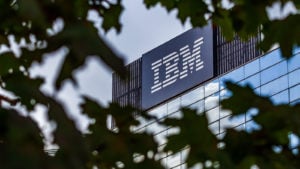While hanging up the boots may be a concept that’s decades away for some of you, it’s never too early to start targeting retirement stocks to buy. Of course, if you’re younger, you have the luxury of time to take some risks. However, you also want to set aside some funds to build a solid nest egg.
For this list, we’re going to concentrate on a combination of relevance and reliable passive income. To build an effective portfolio of retirement stocks to buy, you’ll probably need both components. In my opinion, each of the names below – some might raise eyebrows at first – stands a chance of being either permanently relevant or relevant for the next several decades.
On that note, below are reliable retirement stocks to put on your watch list.
Kroger (KR)

Fundamentally, the concept of Kroger (NYSE:KR) ranking among the top retirement stocks to buy sells itself. No matter how advanced society becomes, you can bet on one thing: humans will need nourishment. Obviously, Kroger provides that with its business of grocery supermarkets. Also, it does so relatively cheaply.
In other words, Kroger sits at or near the bottom rung of the trade-down effect. During times of financial struggle, consumers are likely to trade down from eating out at restaurants to staying at home and cooking. If so, many of the ingredients may come from Kroger.
Regarding passive income, KR features a forward yield of 2.49%. That’s not that great, although it comes in above the consumer staple sector’s average yield of 1.89%. More importantly, the payout ratio sits at 25.75%, meaning that investors won’t have to worry as much about yield sustainability. Finally, analysts peg KR as a moderate buy with an average price target of $51.91, implying almost 12% upside potential.
Johnson & Johnson (JNJ)

One of the world’s most recognizable healthcare firms, Johnson & Johnson (NYSE:JNJ) – following its spin-off of its consumer packaged goods unit – carries significant clout with its medical device and pharmaceutical businesses. As a result, I see J&J as a permanently relevant idea for retirement stocks to buy. In particular, the aging baby boomer demographic along with the aging millennials should provide a constant stream of demand.
Financially, I wouldn’t classify JNJ as anything truly remarkable. Rather, the main point is that it’s dependable. To that end, the company benefits from a relatively stable balance sheet and consistent profitability, backed by its trailing-year net margin of 13.35%.
For passive income, J&J carries a forward yield of 2.86%. While not the most generous yield, it’s above the healthcare sector’s average yield of 1.58%. Also, the payout ratio is very reasonable at 42.18%. Lastly, analysts peg JNJ as a moderate buy with a $182 price target, implying over 9% upside potential.
Coca-Cola (KO)

A soft drink powerhouse, Coca-Cola (NYSE:KO) is as much a business as it is a symbol of American capitalism. To be fair, at first glance, KO might not seem an ideal play for retirement stocks. As the University of Southern California indicates, Millennials generally are more health-conscious than previous generations. Probably, the same can be said about Generation Z.
Again, because Coca-Cola specializes in soft drinks, it might not appeal to relevant consumer demographics. However, the brand benefits from occupying the lower rungs of the trade-down effect. When people need their caffeine, during robust economic cycles, they may go to premium coffee shops. However, when times get tough, they may opt for Coca-Cola beverages.
Another factor to consider is that the company offers a decent forward yield at 3.05%. And while the payout ratio is a bit elevated at 65.12%, Coca-Cola commands 62 years of consecutive dividend increases. Also, analysts love KO, pegging it a strong buy with an average price target of $71.82, implying 19% upside potential.
Sempra Energy (SRE)

For those who are “victims” of Sempra Energy (NYSE:SRE), you might not want to hear about SRE being one of the retirement stocks to buy. As an electric and gas utility provider in the lucrative Southern California market, Sempra isn’t without controversy. For many years, the company has attracted criticism. It’s not surprising nor unique because the firm cynically benefits from a natural monopoly.
Essentially, even if competitors targeted Sempra, they’d probably give up before launching a serious effort given the barriers to entry. However, this cynical framework is what makes SRE one of the top retirement stocks to buy. Combine that with a comparatively rich user base and Sempra is a permanently relevant entity. Despite the criticisms, it’s also generous, at least to shareholders with a 3.33% forward yield. Just as importantly, the payout ratio is quite reasonable at 49.79%.
Turning to Wall Street, analysts peg SRE as a moderate buy with an $84 price target, implying over 17% growth.
Exxon Mobil (XOM)

Proposing hydrocarbon energy giant Exxon Mobil (NYSE:XOM) as one of the retirement stocks to buy presents a key risk. Mainly, I may attract criticism that electric vehicles are the future of transportation. Therefore, Exxon Mobil and its ilk will be irrelevant. Plus, you have state initiatives that aim to prohibit the sale of new gasoline-powered cars. Over time, I’m confident that policymakers will view such efforts as foolish.
That’s not to say that EVs will be relevant. They certainly have their place. However, getting everyone to transition to electric mobility will require an overhaul in energy infrastructure at minimum. Plus, with the length of charging times, the mass-scale transition will likely require groundbreaking technology improvements that may or may not materialize.
Given the questions surrounding EV integration, I think you’ll do well with XOM, especially with its forward yield of 3.36%. Also, the payout ratio sits at 41.23%, making it difficult to ignore. Looking to the Street, analysts target XOM hitting $124.69, implying over 15% upside potential.
IBM (IBM)

At the risk of wearing out the patience of InvestorPlace readers, I’m going to mention IBM (NYSE:IBM) once again, this time for – you guessed it – retirement stocks to buy. If you’ve followed my work over the past several months, you know my game plan. Basically, I’m going to point out that IBM appears significantly undervalued for offering artificial intelligence while other tech firms are grossly overvalued for providing similar products.
However, the fundamental criticism is that IBM has not been successful in its AI endeavors, particularly in the healthcare space. Still, just because IBM failed does not mean that the current flavors of the week will succeed. In addition, “Big Blue” deploys significant resources toward AI research. If digital intelligence is a marathon, IBM could be a top player.
Also, don’t forget that while you’re waiting, the company provides a forward yield of 4.57%. Given the rate, I think a payout ratio of 65.88% is reasonable. However, it’s a risky contrarian play since analysts only view shares as a hold.
Philip Morris (PM)

Easily one of the most controversial ideas for retirement stocks to buy, Philip Morris (NYSE:PM) represents a big tobacco firm. As such, some investors may consider PM stock as bad juju. Further, market participants must also consider the seemingly poor fundamentals impacting Philip Morris. Essentially, global smoking prevalence has declined, thus impugning the company’s total addressable market.
On that note, PM seems a ridiculous wager. However, while smoking rates have decreased, vaping rates apparently skyrocketed, based on the explosive mobility of the e-cigarette market. To be sure, Philip Morris must now contend with myriad small competitors. At the same time, smokers look for a certain “tightness” in their drags, an attribute that a cigarette company would likely be better able to duplicate.
Also, the underlying passive income is very attractive at a forward yield of 5.34%. To be fair, the payout ratio is lofty at 73.98%. Still, Philip Morris enjoys credibility with 14 years of consecutive dividend increases. Lastly, analysts peg PM as a unanimous strong buy with a $116.71 price target, implying nearly 23% upside.
On the date of publication, Josh Enomoto did not have (either directly or indirectly) any positions in the securities mentioned in this article. The opinions expressed in this article are those of the writer, subject to the InvestorPlace.com Publishing Guidelines.
